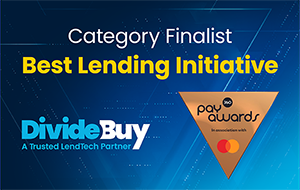Consumer finance has never been more popular. Office of National Statistics show that household credit, like credit card debt and loan plans, rose 11% to £119bn in the two years to March 2019. And experts predict that it’s only going to get bigger.
“We expect the market for consumer finance as a whole to continue to grow across Europe as consumption expands,” said global accountancy giant Deloitte in its ‘Future of Credit’ report in 2019.
This level of household debt would have been difficult to fathom even a few decades ago, but changing social perceptions and, in recent years, the boom in eCommerce have transformed the consumer finance landscape.
It didn’t used to be this way. For older generations who grew up in the austere years of the 1950s and early 1960s, there was a certain stigma to consumer credit and the industry itself was tiny. By the mid-60s, though, a booming economy and broader social changes meant that people – and society was a whole – were beginning to embrace debt.
A flurry of innovations in household appliances like washing machines, fridges, cookers and, of course, televisions, unleashed a new wave of consumer demand. At the same time, a revolution in the consumer finance industry itself gave retailers innovative new finance products to tap into this growth. Any stigma once associated with debt was replaced with pride in being able to afford the latest products for the home.
Retailers began to offer new lending solutions, such as hire purchase agreements, enabling customers to pay for the latest household tech in convenient monthly payments.
In the 1990s, the introduction of sophisticated credit scoring systems and instant approvals gave retailers even more finance tools to woo consumers, making it even easier for shoppers to access credit, and more socially acceptable. Now, buying something on credit – from a pair of shoes to a new car – is just a normal part of the retail experience. In fact, not only is it ‘normal’, consumers increasingly expect it.
Credit has always allowed people to buy things that they otherwise wouldn’t be able to own. This doesn’t necessarily mean that they can’t afford it, just that they don’t want to incur the opportunity cost of saving for so long.
Today, credit isn’t just about accessing a better lifestyle. For many people, it’s a tool to make their lives easier and more convenient, while at the same time making their money go further, even on relatively low-value items like clothes or shoes.
The only potential downside is that most credit solutions, like credit cards, store cards or POS finance, charge interest on the money you borrow, which means you end up paying more than if you’d bought it outright.
That’s where DivideBuy’s interest-free credit solution is different – there is no interest.
DivideBuy enables retailers to provide instant consumer credit on a huge range of products. Shoppers can then split the cost of their product over a period of between 2 and 12 months, without paying any interest on the transaction. So the price they pay is exactly the same as if they’d paid outright.
It gives consumers more control over how they pay for goods and gives retailers a powerful USP for attracting more buyers.
No wonder that, according to a recent report from Research & Markets, the consumer credit market is expected to grow by around 5% a year until 2023, to reach £372.4 billion. A sure sign that any stigma once attached to credit has long been consigned to the history books.
To find out how DivideBuy can help your business increase sales and basket values, find out more today.




 Tweet
Tweet
 Facebook
Facebook


















